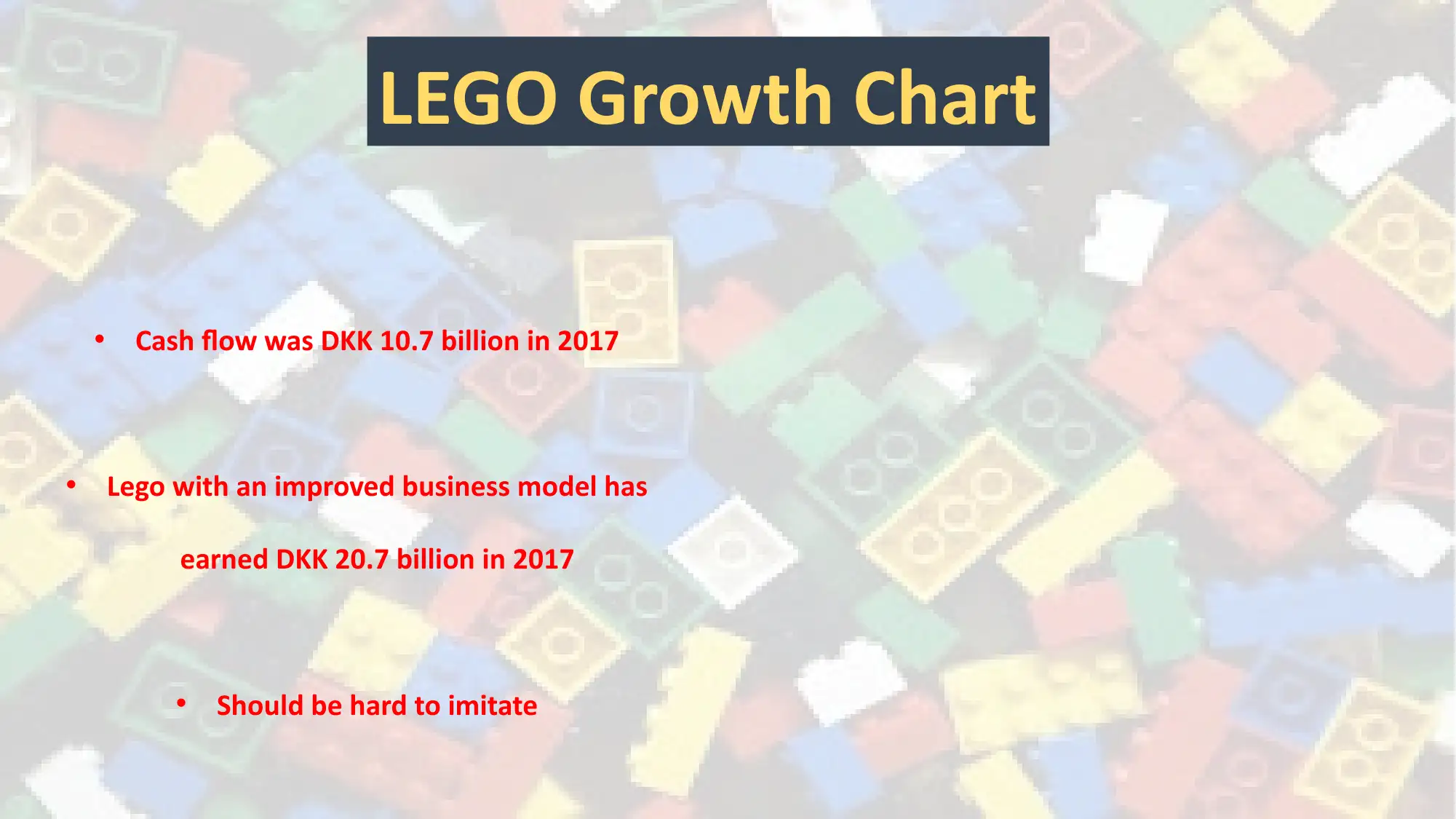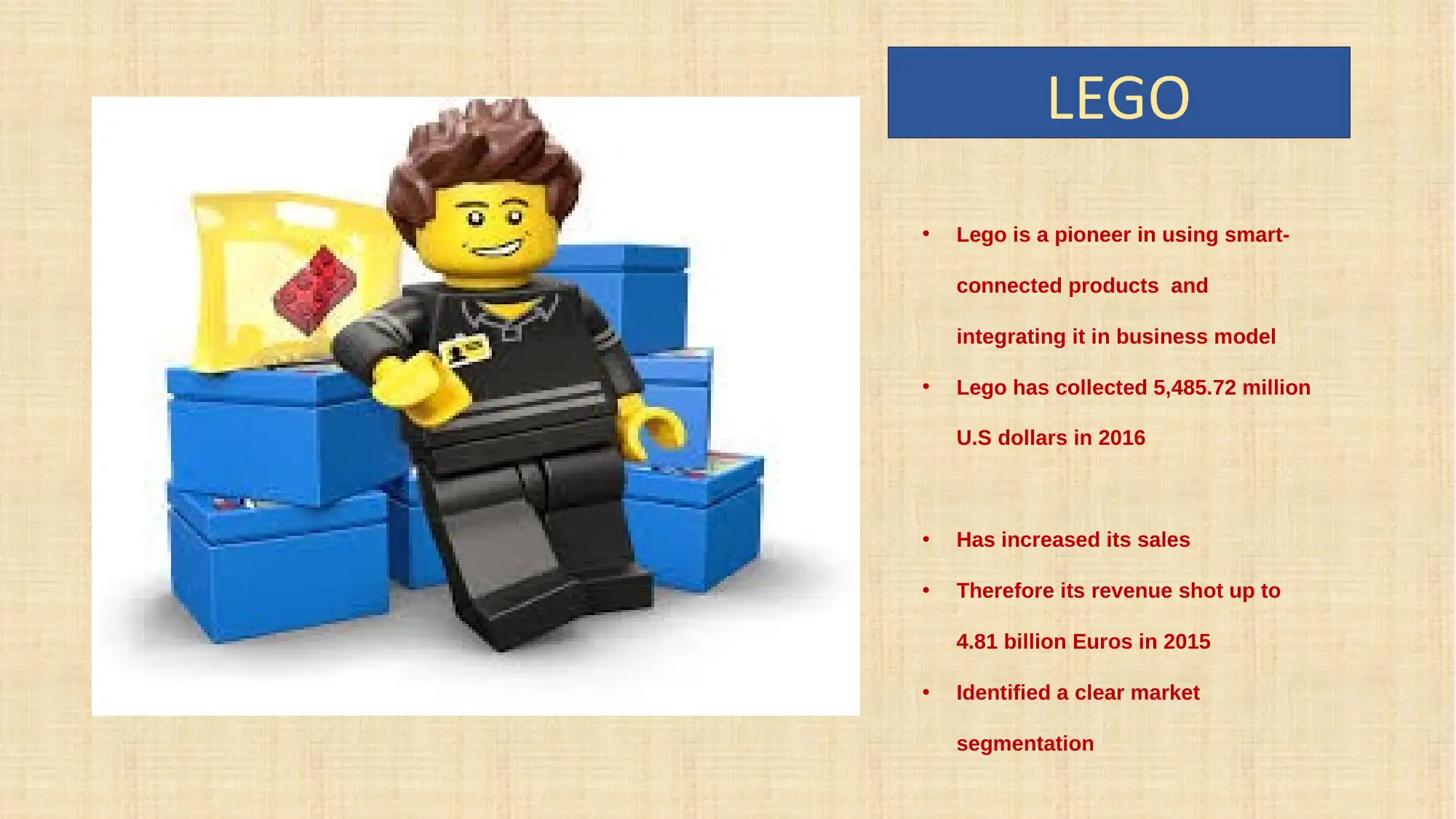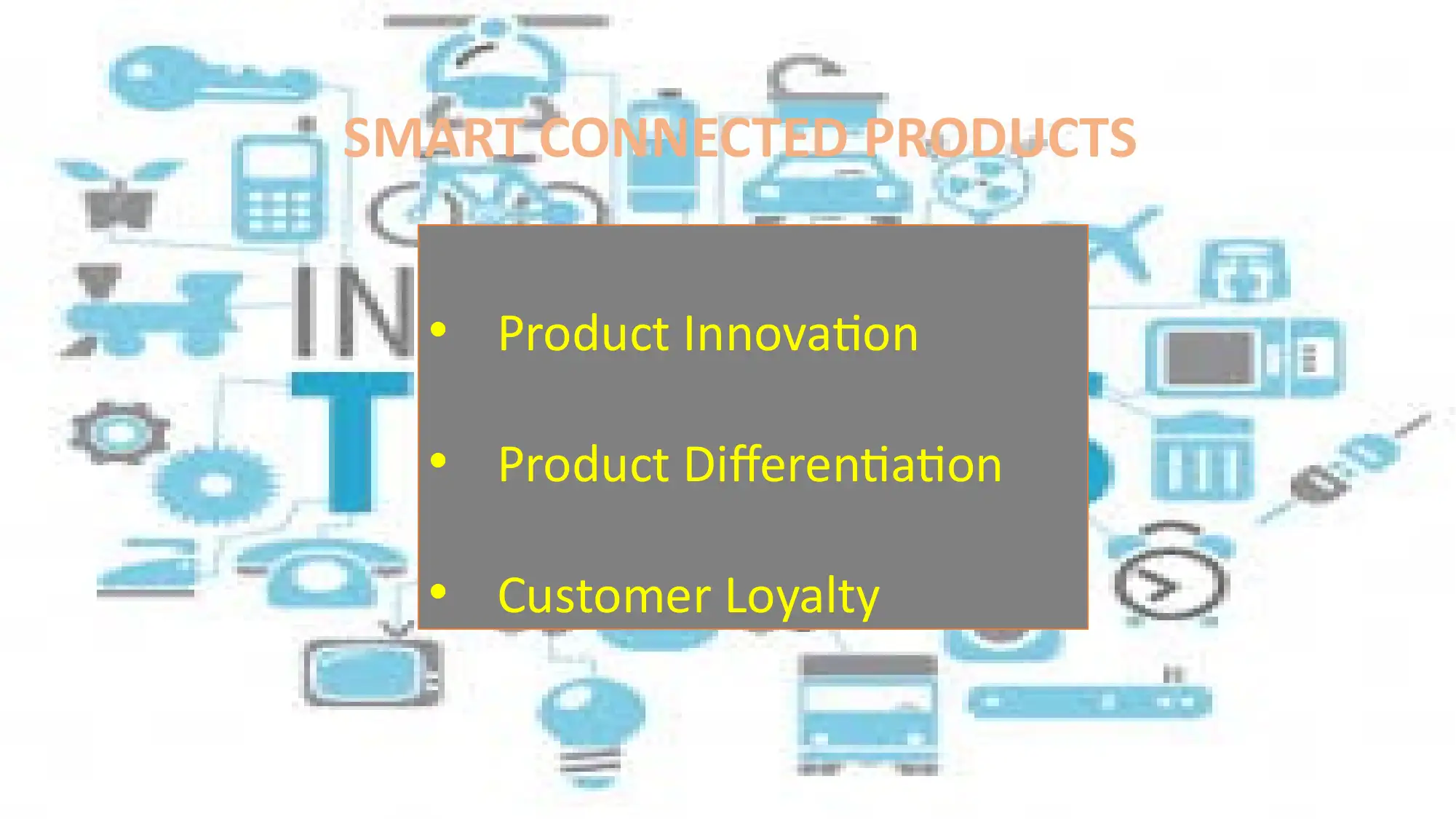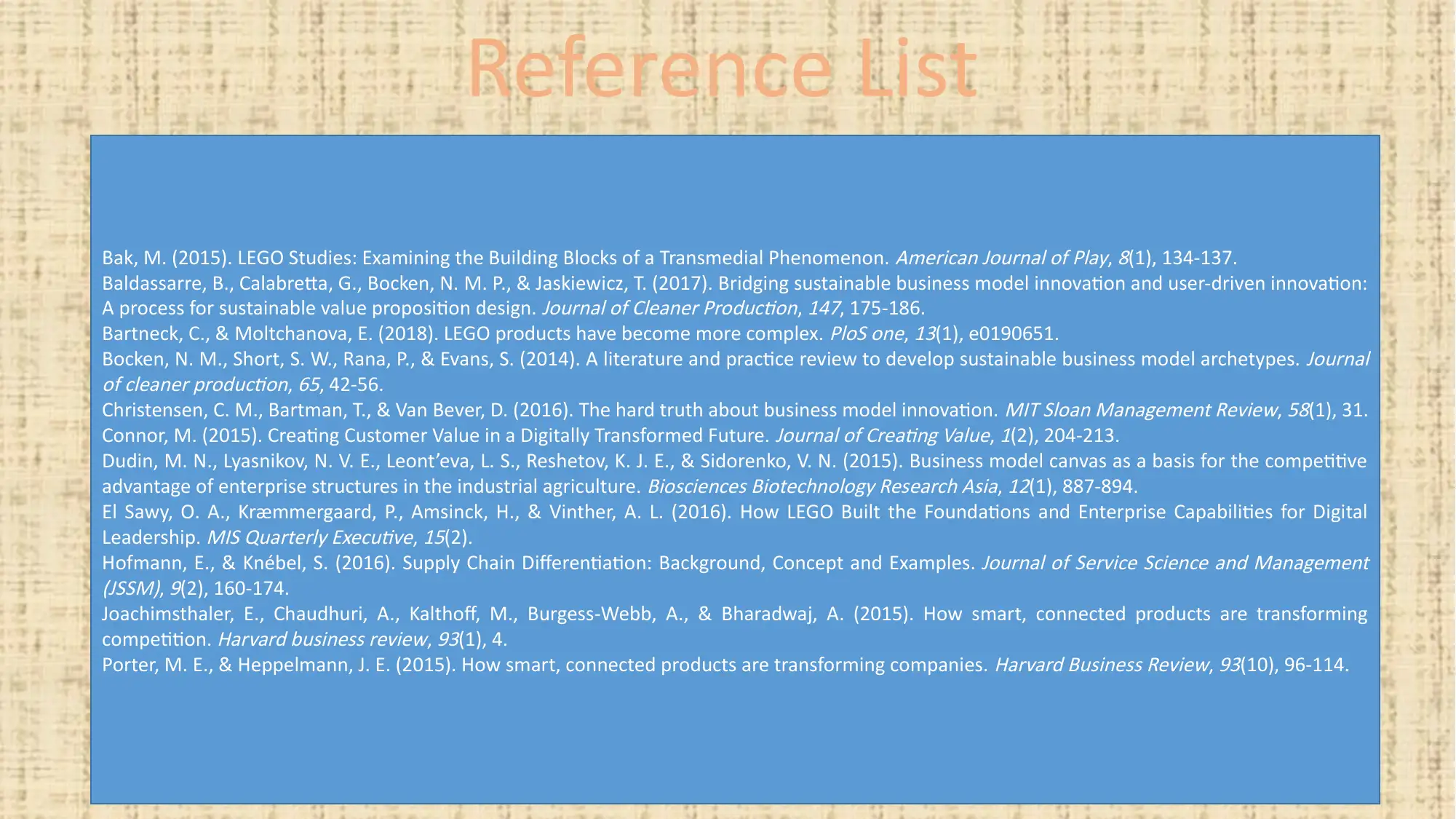Essay on LEGO's Innovative Business Model and Strategic Growth
VerifiedAdded on 2023/06/12
|7
|574
|80
Essay
AI Summary
This essay analyzes the LEGO Group's business model, focusing on key elements such as innovation, value proposition, customer relationships, and strategic growth. It examines how LEGO leverages constant innovation and smart-connected products to maintain a competitive edge. The analysis includes a review of LEGO's financial performance, highlighting its significant revenue and cash flow. The essay also identifies LEGO's clear market segmentation and product differentiation strategies. The study references various academic sources to support its findings, emphasizing LEGO's pioneering role in integrating technology into its business model and creating customer loyalty. This document is available on Desklib, a platform providing study tools and resources for students.
1 out of 7













![[object Object]](/_next/static/media/star-bottom.7253800d.svg)